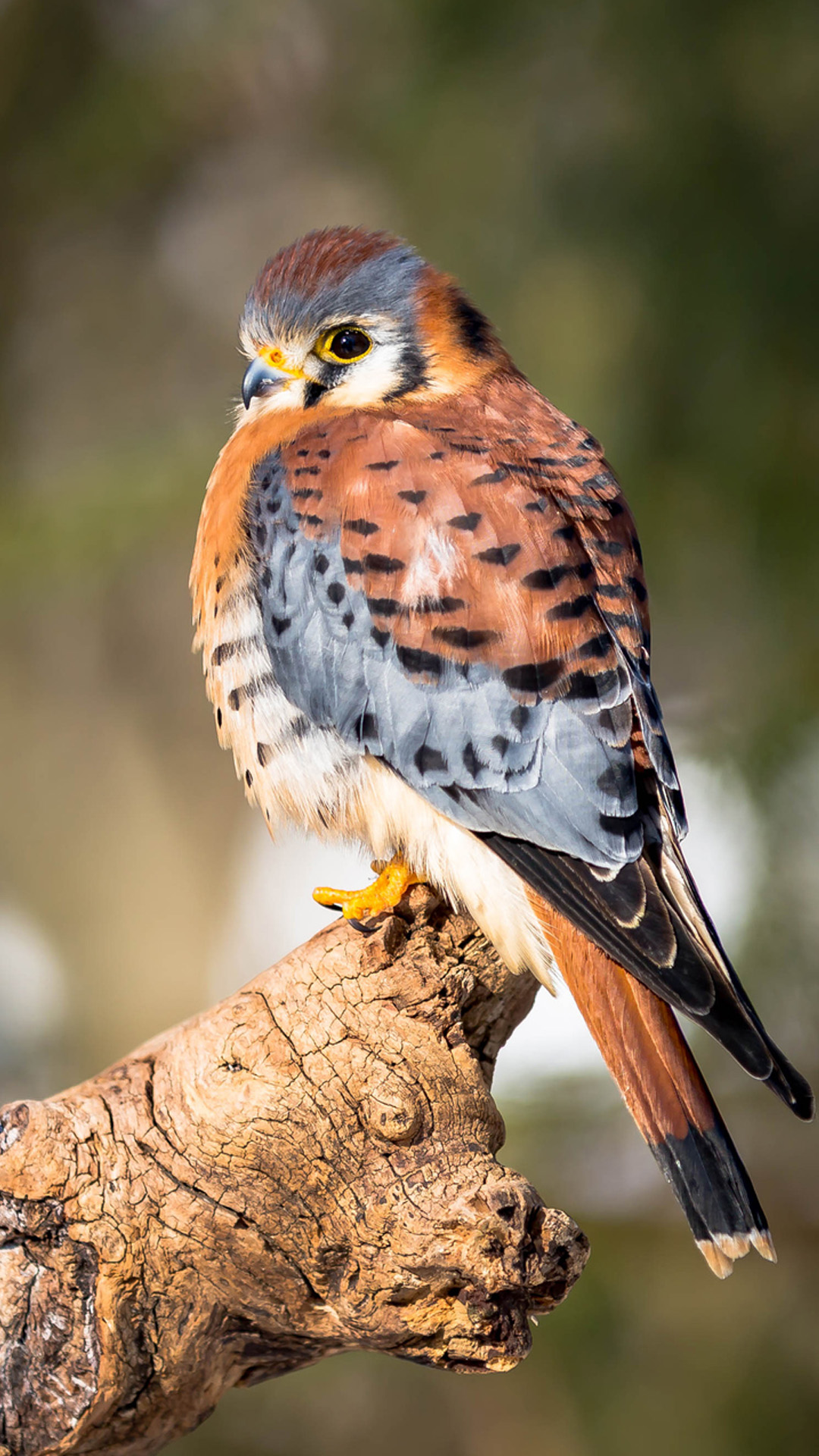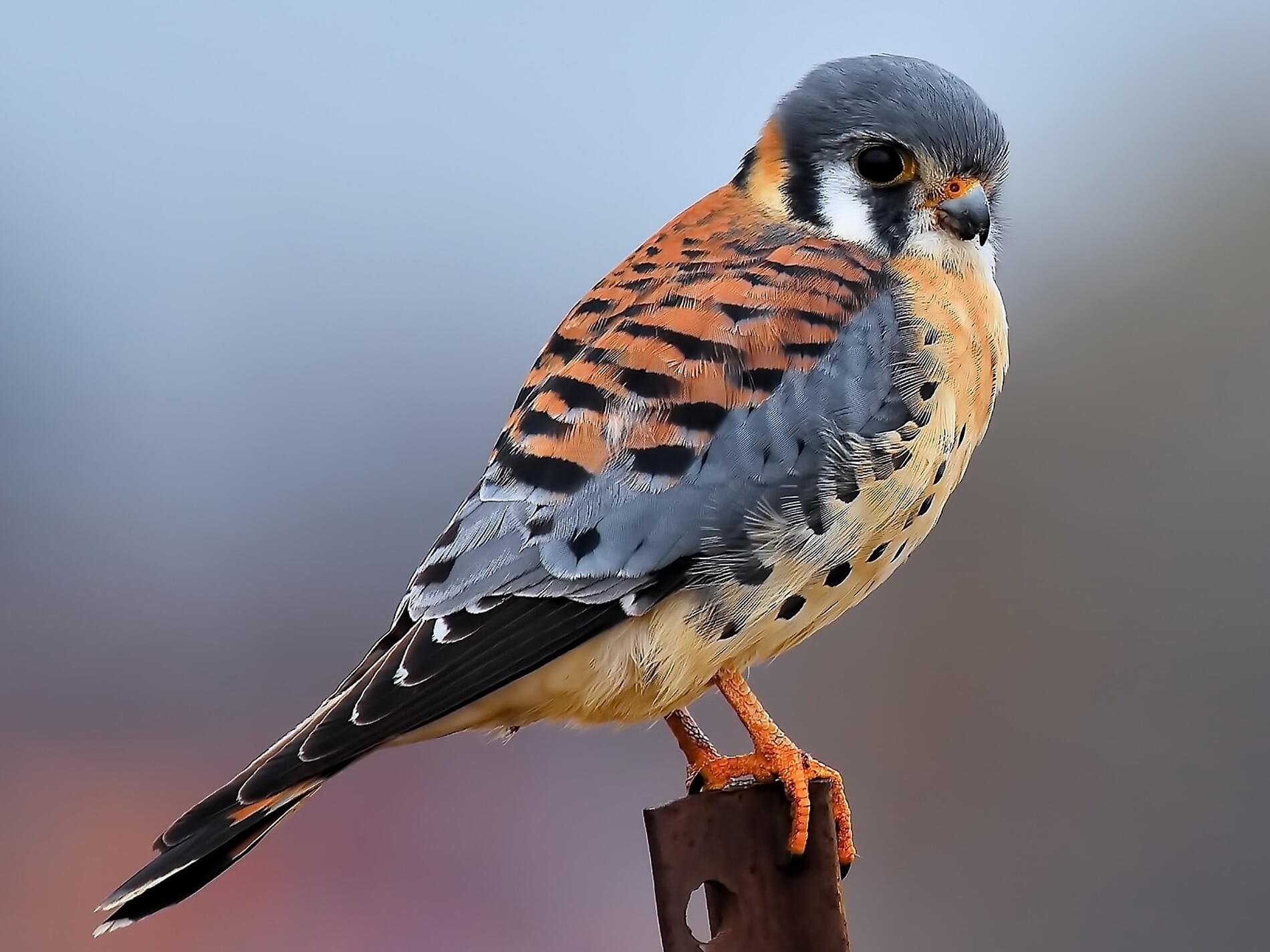North America’s smallest falcon, the American Kestrel, is a remarkable bird that captures the attention of bird enthusiasts and casual observers alike. With its vibrant colors and fierce hunting skills, this petite bird has earned its place as a favorite in the wild. Known for its blue wings, warm reddish backs, and striking tails, the American Kestrel can be found in various habitats across the continent. Hovering over open fields, pastures, and even suburban areas, the kestrel is both a common and fascinating sight.
This small yet powerful bird has a knack for perching on wires or hovering in the air while searching for its next meal. The American Kestrel thrives in open spaces where it can spot insects, rodents, and other small prey. Its adaptability and widespread distribution make it one of the most common falcons in North America, though recent studies indicate a decline in its population. Understanding this bird’s habits, diet, and conservation challenges is essential for appreciating its role in the ecosystem.
For those eager to learn more about this bird, there’s plenty to explore. From its unique hunting techniques to its monogamous mating behavior, the American Kestrel offers a wealth of information that is both intriguing and enlightening. So, let’s take a closer look at this little bird with a big personality, and discover what makes it such a remarkable part of our natural world.
Table of Contents
- What Does an American Kestrel Look Like?
- Where Can You Spot the American Kestrel?
- How Do American Kestrels Hunt?
- Are American Kestrels Facing Any Threats?
- American Kestrel - Diet and Feeding Habits
- Do American Kestrels Mate for Life?
- American Kestrel - Conservation Efforts
- Interesting Facts About the American Kestrel
What Does an American Kestrel Look Like?
When people talk about the American Kestrel, they often mention its striking appearance. This little falcon has a knack for standing out, even in open spaces. You can spot males with their blue wings, which contrast beautifully with their warm reddish backs and tails. The females, on the other hand, sport the same warm reddish tones on their wings, back, and tail. Both sexes have black tips on their tails, adding to their distinctive look. In a way, the American Kestrel is one of the most colorful birds of prey you’ll come across. Its small size—about the same as a mourning dove—makes it even more surprising to see such vibrant colors on such a petite frame.
Where Can You Spot the American Kestrel?
If you’re out exploring and wondering where you might spot an American Kestrel, look for open fields, pastures, and even suburban areas. These birds tend to hang out in places where they can easily hunt for insects, rodents, and other small prey. You might see them perched on telephone wires or hovering in the air as they search for their next meal. They seem to prefer areas that are close to open fields, where they can keep an eye out for movement below. So, next time you’re driving down a rural road or strolling through a park, keep an eye out for this little bird with a big appetite.
How Do American Kestrels Hunt?
When it comes to hunting, the American Kestrel has a few tricks up its sleeve. These birds are known for their ability to hover in the air, much like a helicopter, while scanning the ground below for prey. Once they spot something interesting, they’ll swoop down quickly to snatch it up. Their keen eyesight allows them to spot even the tiniest movements from quite a distance. In some respects, they’re like little detectives, always on the lookout for their next snack. They also like to perch on wires or branches, patiently waiting for the right moment to strike. This methodical approach makes them quite effective hunters, despite their small size.
Are American Kestrels Facing Any Threats?
While the American Kestrel is a common sight across North America, its population has been on the decline in recent years. Studies suggest that the bird’s numbers have dropped by an estimated 51% between 1966 and 2017. This decline could be due to a variety of factors, including habitat loss, pesticide use, and competition with other species. In a way, these challenges highlight the importance of conservation efforts to protect this beloved bird. By the way, habitat loss is a big issue for many wildlife species, and the kestrel is no exception. It’s crucial to address these threats if we want to ensure the kestrel’s survival for future generations.
American Kestrel - Diet and Feeding Habits
The diet of the American Kestrel is quite diverse, consisting mostly of insects, rodents, and other small creatures. These birds have a knack for finding their prey in open fields, agricultural areas, and even suburban backyards. They tend to hunt during the day, using their sharp eyesight to spot movement from above. Sometimes, they’ll perch on a wire or branch, patiently waiting for the right moment to strike. In other words, they’re not afraid to get a little creative when it comes to finding their next meal. Their adaptability in hunting techniques is one of the reasons they’ve been so successful across different environments.
Do American Kestrels Mate for Life?
One of the most interesting aspects of the American Kestrel is its mating behavior. These birds tend to form monogamous pairs, often staying together for several years. The male typically gifts the female with food during courtship, which is a sweet gesture in its own way. He’ll also help scout out potential nest sites, though the final decision usually rests with the female. Interestingly, these birds don’t create their own cavities but instead rely on finding existing ones with narrow entrances. This behavior highlights their resourcefulness in adapting to their surroundings.
American Kestrel - Conservation Efforts
Efforts to conserve the American Kestrel involve a variety of strategies aimed at protecting its habitat and addressing the threats it faces. Organizations and individuals are working together to create safe nesting sites, reduce pesticide use, and promote awareness about the importance of this bird in the ecosystem. In some respects, these efforts are crucial for ensuring the kestrel’s continued presence in North America. By focusing on habitat restoration and education, conservationists hope to reverse the population decline and help this bird thrive once again.
Interesting Facts About the American Kestrel
There’s so much to learn about the American Kestrel, and some facts are just downright fascinating. For example, did you know that these birds are often used in falconry, especially by beginners? Despite not being the strongest flyers compared to larger falcons, proper training and weight control can make them effective hunters of birds like sparrows and starlings. They’re also incredibly colorful, with blue wings, rufous backs, and tails with black tips. Plus, they’re one of the most common birds used in falconry, highlighting their popularity among enthusiasts. So, the next time you see one of these little falcons, take a moment to appreciate all the amazing things they bring to the table.
Final Summary
From its vibrant appearance to its unique hunting techniques, the American Kestrel is a bird that truly stands out. While it faces challenges like habitat loss and population decline, conservation efforts are underway to protect this remarkable species. Understanding its diet, behavior, and mating habits gives us a deeper appreciation for its role in the ecosystem. By learning more about the American Kestrel, we can all play a part in ensuring its survival for years to come.



Detail Author:
- Name : Ms. Beth Trantow DVM
- Username : madalyn.corwin
- Email : toy.shyanne@jacobi.biz
- Birthdate : 1993-05-23
- Address : 3355 Zelda Lights Taniaton, DE 98315-0970
- Phone : +16173074387
- Company : Sauer LLC
- Job : Radio and Television Announcer
- Bio : Dolorem nulla amet dolorum perferendis. Tenetur nihil perferendis provident quibusdam et dolorem nihil saepe.
Socials
twitter:
- url : https://twitter.com/abbey.hegmann
- username : abbey.hegmann
- bio : Et et voluptas dolores aut quia. Ab adipisci omnis excepturi amet tempora nihil. Ut eum mollitia labore id atque a ducimus.
- followers : 3841
- following : 2350
facebook:
- url : https://facebook.com/ahegmann
- username : ahegmann
- bio : Placeat pariatur quo quia sunt molestiae rerum ut.
- followers : 3649
- following : 214
tiktok:
- url : https://tiktok.com/@abbey_id
- username : abbey_id
- bio : At quia animi qui quidem. Aliquam et voluptatem laudantium accusamus in.
- followers : 4970
- following : 2218
instagram:
- url : https://instagram.com/abbey_xx
- username : abbey_xx
- bio : Neque suscipit ut recusandae aliquam sed id. Suscipit autem cupiditate qui aut.
- followers : 4605
- following : 2990